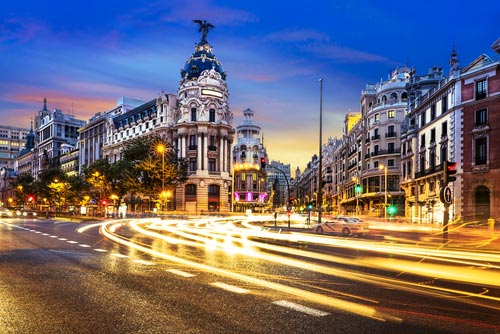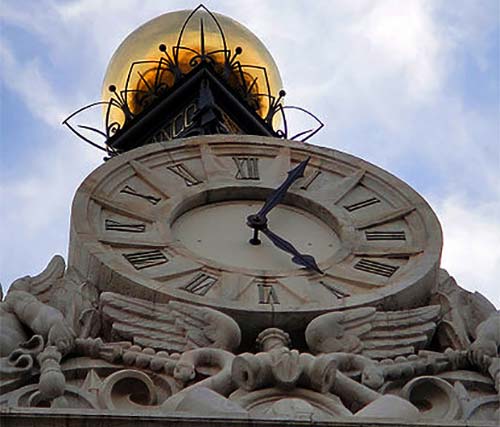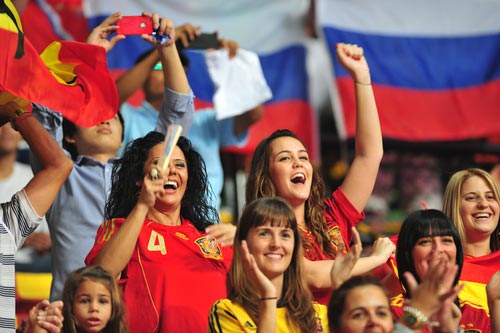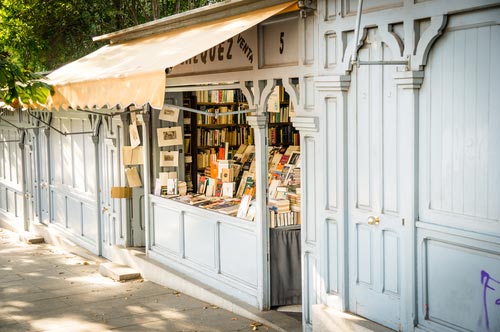Madrid is a city of contrast. Despite the fact that this phase is a cliché, it is true. In one side is the most devoted catholic city in Spain, in…


Madrid is a city of contrast. Despite the fact that this phase is a cliché, it is true. In one side is the most devoted catholic city in Spain, in…

Now a days the currency of Spain, along with another seventeen countries in Europe, is the Euro. This currency started to be used in 2002 in the so-called Eurozone, the…

Madrid is a big city and three days are not enough to visit all its wonders. Unfortunately, most of the tourist visiting the capital of Spain don’t have more time….
Whether you like it or not, bullfighting is part of the Spanish culture and part of the Mediterranean tradition. There are probes showing that bull-leaping –a bullfighting antecessor- was practice in the Minoan Crete in the Bronze Age. The human kind always has wanted to probe its value and its power over the rest of the planet creatures. That is probably why a man face a bull at the first time.

© wikipedia
Bullfighting is part of the Mediterranean culture as its celebrated diet, flamenco, olive oil or wine. That does not mean you have to agree on its practice. In fact, most of the European countries has banned it. In France, bullfighting is allowed, but not killing or poking the bull in the act.
There are also another interesting practices involving bulls, like Running of the Bulls –in Spanish called “Encierros”. It is a practice that comprises running in front a group of bulls that have been let loose on reserved streets. The most popular Encierros are celebrated in Pamplona honoring Saint Fermin every year on the first week of July.
Now that you understand the importance of bullfighting for the Spanish culture, come to a bullfighting show in Madrid. Enjoy being part of a legendary tradition and judge by yourself whether you like it or not.
You are not a truly Real Madrid fan if you don’t buy every year the official scarf. Since Real Madrid finally and deservedly won its 10th UEFA Europe Champion League, this year scarf will be celebration it.

© realmadridshop.com
The scarf is printed with the world “La Décima” meaning “the tenth” and a number ten in both sides. There are four symbols printed on each tip. On one side, the Adidas logo and the UEFA Champions League logotype, and in the other the Real Madrid shield and the sketch of the prize and the words “Final Lisbon 2014”. The scarf is white with blue and gold details, and blue marine tassels.
Buy your scarf in the official Real Madrid online store and come to cheer your team next year in the Champions League matches. While waiting for next year calendar to buy your Real Madrid tickets come to the Real Madrid Tour and contemplate the 10th Champions League trophy.
Complutense University of Madrid is a public research university in the capital of Spain. It was founded in 1293 thanks to the generous donation of King Sancho IV of Castile to the Archbishop of Toledo. Originally the university was placed in Alcalá de Henares where it became the first university campus ex-novo of the history. Many of the original buildings still being part of the university campus of the Alcalá de Henares University.

© losmininos
In 1499, the university dean Cardinal Cisneros obtain from Pope Alexander VI a bull conferring recognition to all the degrees. He also rename the university as Universities Complutensis, regarding the Latin name of the city.
In 1836, Queen Maria Cristiana closed the university and move it to Madrid. The new institution was renamed as Literary University, and it won’t be until 1970 that retakes its actual name. Place in the active capital of Spain, Complutense University of Madrid became a large institution especially in the 19th century.
In 1927, King Alfonso XIII donated the lands to build the actual campus in Moncloa area, also known as “Ciudad Universitaria”. Besides, the land Alfonso XIII donated a generous amount of money to build new structure to hold the institution. Most of the building were designed in Functionalism style, some of them survive to the Civil War later on.
In 1970, the university again and for the last time renamed, becoming the Complutense University of Madrid.

Definitely, the best way to enjoy flamenco in Madrid is going to a traditional tablao and watching a flamenco show while eating some typical Spanish food. If you have seen…
Madrid is located in the GMT+1 or GMT+2 time zones. Spain, like most European countries, uses daylight saving time program. The time changes regardint the Daylight saving time or summer time program take places the fourth Sunday of March and the fourth Sunday of October. In March you should forward one hour and in October back one hour. That means that Spain is in GMT+1 zone in winter from October to March, and in GMT+2 zone in summer from March to October.

Even though, Europe comprises seven times zones, Spain –the whole country- is located in the same zone. That means once you adjust your watch in Madrid, you should not be worry any more about the time.
Daylight saving time causes a later solar noon than the clock noon. This means that the warmest hours of the day does not happen to meet the noon hours. Especially in summer, avoid being outside in the sun between 2:00 and 4:00 p.m. Also, remember to drink enough water and avoid strong physical activities around this period of the day. Solar noon is the perfect time to enjoy Madrid’s museums!
Right now in Madrid is:

The FIFA World Cup Brazil 2014 will start on June 12th with an opening match between Brazil and Croatia on the Arena de Sao Paulo. This World Cup edition promise…

There are plenty of interesting things to do in Madrid in June. Spring is the perfect moment to come outside and enjoy having tapas in a terrace or a picnic…